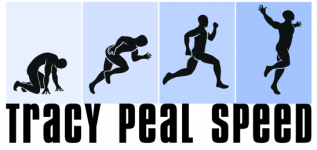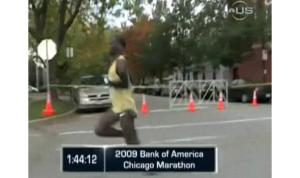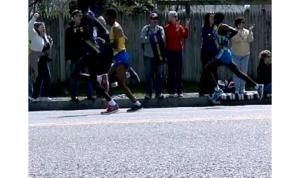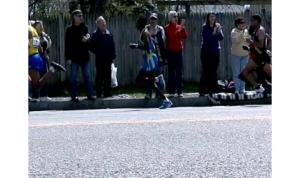THE QUESTION OF VARIABILITY: Runblogger and Burfoot and Biology, Oh My!
I recently read, and was dumbfounded by, two of Pete Larson’s (anatomy and exercise physiology professor at Saint Anselm College in Manchester, NH) companion internet posts – last year’s “On Running Form, Variability in Elites and What This Means to You (And Me)” and his recent blog, “On Human Variability, Running Shoes, and Running Form: The Importance of an Individualized Approach.” The gist of Larson’s (aka Runblogger) argument, woven into the subtext of both articles, is thus: although he tends “to agree that there is probably an optimal way for a human to run,“ due to the anatomical variability inherent in the human species, he doubts that a “single perfect running form” could be applied to “every human who runs.”
To support his viewpoint, Larson leans on his biological knowledge of beak differentiation in Galapagos finches and blood vessel branching characteristics in cats to drive home his point about the biomechanically-varied footstrike in elite Boston marathoners. In the former case, he hypothesizes that “variation is normal…[it] serves as the raw material upon which natural selection can act in the process of evolution”, and has recently concluded, as humans “we also exhibit anatomical and physiological variability just like any other species does.”
It does make sense. The evolutionary mechanism of adaptation is obviously necessary for animal species survival. In humans, this morphing of anatomical characteristics is how we got up on two feet in the first place. Without change (nontropy), permanent existence is unlikely. All biological systems are in a constant interaction with their immediate environment – the flux of this relationship creating the breeding ground for alterations in structure and behavior. But, the “myth of variability” can be intrinsically seen when looking beyond these mutations of physical attributes, shifts of integration necessary to sustain compatibility with nature. Scientists, like Larsen, are reductionists who study these changes in vitro, becoming lost in the minutiae of things like finch beak/feline arterial differential data without a clear understanding of how specific genealogical traits relate to the principles that guide us – if at all. Their concepts about movement lack dimension. Why do we all run differently? What effects do observable variants like abnormalities, impingements or impairments have on our ability to run well?
On planet earth, these general rules will always apply: Life is movement, movement exists in a gravitationally-driven field and without gravity movement wouldn’t exist the way we know it. From birth, our motor development hinges on this delicate interaction: the desire to move and the fear associated with this movement. When first walking, babies literally “let go”, quickly stepping or shuffling from one safe hold (couch, table, mother’s leg) to another. This leap of faith, this temporary loss of balance is a must – yet also the price of freedom. As I watch and coach running daily, it fascinates me how far we’ve come from these innate beginnings.
Originally, we play with the possibilities of what our bodies can do. We begin to see the limitless potential of movement. Then something happens. We fall and hurt ourselves. We become more aware of how others move. Almost subconsciously, we begin to build walls to “protect ourselves.” We stop running with abandon. Although cursed with a higher level of consciousness than animals, we often fail to choose the proper posture for our movement. This “free will” of choice is what makes humans unique in the animal kingdom, but can limit us as well. As Dr. Nicholas Romanov explained, “the bee has an innate instinct to build the beehive with perfect construction. At this point, the bee’s ‘creativity’ is ended, illustrating that instincts are very restricted …Human progress starts, where instincts end and goes beyond this point.” We can run better. Instead we become movement victims, choosing our running style by copying from someone who copied it from someone else and so on, until we’re running with no quality. Instincts fall prey to imitation.
Not so with animals. Percy Cerruty, renown Australian running coach (of Olympic gold medal miler Herb Elliot) observed that “amongst other things I learnt from the study of the racehorse was that they all moved exactly similarly: that a silhouette of one going fast fitted exactly into a silhouette of another – extent of leg-throw – movement of legs – head and neck angles and relationships – all identical. Whether heavily built or lightly, long in the legs or not so long, tall or short.” So, if we accept that all species of animals move similarly (or the whole domain of animals, birds, insects and fish according to Aristotelian thought), it would suggest that evolution is really about changing the variables to match the situation as a subplot to finding the most suitable way to get from Point A to Point B.
To argue, like Larson does, that the varying heights, weights, gender and physiologic make-up of runners allows for an idiosyncratic approach to (running) movement, disavows the physical presence of gravity and our need to take advantage of it. “The gravitational field of the earth is easily the most potent physical influence in any human life. When human energy field and gravity are at war, needless to say gravity wins every time. It may be a man’s friend and reinforce his activity; it may be his bitter enemy and drag him to physical destruction,” stated Structural Integrationist Dr. Ida Rolf. Humans are systems within systems, that consume, expend and channel energy. As varied as we are (color, shape and size), we all have the same basic framework, abide by the same rules.
In the “On Human Variability” article, Larson gets bogged-down on “footwear options, genetics, dietary habits and history of past physical activity” as signs that we are nothing like our barefoot running ancestors, who were seemingly able to run all day while playing or “persistence hunting.” Yes, we are far-removed from indigenous populations like the Tarahumara or Hadzabe. They have a distinct running style worthy of emulation. Why? Because they fearlessly run on their own terms (often, fast and far) without the need of doctor visits – and for the majority of us this belies possibility. Ultimately then, the myth of variability, defined in our excuses for running poorly and hurt, are the mistakes we make in simple execution.
Currently, researchers are scratching their heads while trying to establish a running paradigm by ascertaining its symptoms. In a recent New York Times article, Dr. Steef Bredeweg of the University Medical Center Groningen, Netherlands, in reference to how best to train novices and prevent injuries said, “we don’t know what is the right thing to do.” A closer look reveals that without a measuring stick regarding human running form, chaos persists (note how many of you have or suffer from running-related injuries) as design fails to correlate with function.
Larson is even at a loss, while interpreting the article “Effects of Shoe Cushioning Upon Ground Reaction Forces in Running.” (Clarke et al., International Journal of Sports Medicine, 1983). In the end, the randomness of the “impact force vs. shoe design” data seems to have left him exasperated. He figuratively throws up his hands, re-emphasizing that “that runners are variable, and we each have different needs on an individual level.” True, all runners have different needs, but they all have the same necessities. Footstrike pattern, shoe selection and aerobic capacity may be varying but efficient movement is not. Despite how you land, getting the body in right position to move forward is non-negotiable.
Unbelievably, Larson (and journalists like Runner’s World magazine editor-at-large and former Boston Marathon winner Amby Burfoot, who reasoned “it’s hard to turn running-form theories into physics, which depends on universal laws” Really?), cannot connect the dots. Shoe design, genetics, psychology, anthropometrics and physiological limits are easy targets for scientific analysis, providing a smoke-screen which unexpectantly clouds the study of human locomotion. Brilliantly presented by Mabel E. Todd in the 1937 book “The Thinking Body”, her observation, though in opposition to Larson’s views, plays as one of the beat ad hoc definitions of running mechanics I’ve ever read: [a] “pattern…of many small parts moving definite distances in space, in a scheme perfectly timed, and with the exact amount of effort necessary to support the individual weights and to cover the time-space movement.”
When Larson shows still images of the top five finishers in the 2010 Boston Marathon – Robert Cheruiyot (the eventual winner), Tekeste Kebede (2nd place), Meb Keflezighi (5th place), and Ryan Hall (4th place) – the irony is significant. Choosing a “standardized moment in the gait cycle” to compare these runners preposterously contradicts his insistence on stride variability. Why not show them all a few frames later, when they all demonstrate the position where bodyweight balance is poised on the fulcrum of the ball of the foot? We all must go through this position [see all photos]. Knowing that proper establishment of body mass on the ground is essential, the quibbling over footstrike variance is a non-sequitur. Why argue about footstrike (or arm carriage, or body orientation for that matter), rather than acknowledge the common errors in timing and anticipation of ground contact?
The greatest obstacle facing the modern runner (and modern running performance) is the inability to fix his or her relationship with gravity. The creation of the variability myth enables the self-serving ego of the runner and the business of running research. There are costs for our individuality. Just because we see differences doesn’t mean they should exist. I help athletes reinterpret their perception of movement and become more conscious with their running. Larson, like so many others in the field (Burfoot, Ian Hunter, Alberto Salazar, Steve Magness), can’t comprehend that variability predicts a conceptual void.
Instead of providing the American running community with cohesive answers, they skirt the issue with misinformation and unanswerable questions regarding training, diet and footwear. Variability is all about what decisions we make before and after our bodies reach the tipping point. Instead of defending the heel-striking of three-time U.S. Olympian Abdi Abdirahman (as Burfoot does in the addendum to Larson’s “On Running Form” piece), when will we realize the important question is “How much better can we be?” The answer is simply articulated by Dr. Rolf: “When the body gets working appropriately, the forces of gravity can flow through.”


















